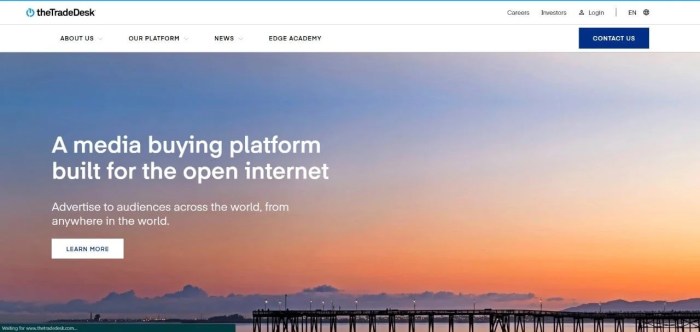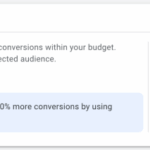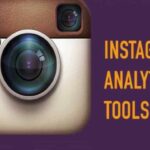Tools for ad campaigns are essential for any successful marketing strategy. From social media platforms to sophisticated automation tools, this guide dives deep into the world of advertising technology. We’ll explore various types of tools, helping you choose the right ones for your specific campaign goals and budget. This comprehensive overview will equip you with the knowledge to create effective and efficient ad campaigns.
We’ll cover everything from selecting the perfect tools to integrating them seamlessly for maximum performance. Discover how to measure your campaign’s effectiveness and use data to optimize future strategies. This detailed guide includes specific tools for different campaign types, allowing you to tailor your approach to achieve optimal results. Ultimately, we aim to empower you to make informed decisions and drive significant results.
Types of Advertising Tools
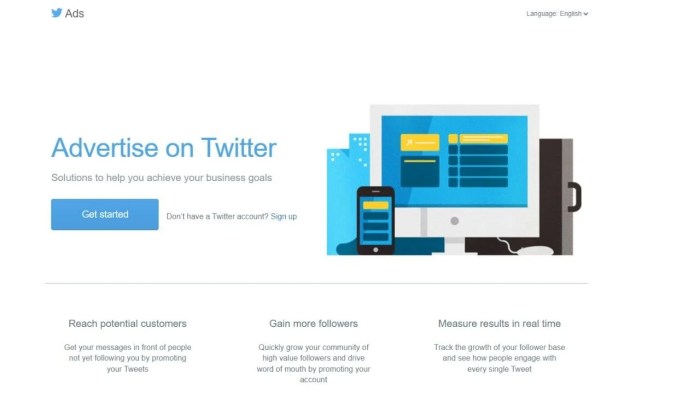
Crafting effective ad campaigns hinges on choosing the right tools. This involves understanding the nuances of various platforms and their unique strengths and weaknesses. By meticulously evaluating each option, marketers can maximize their return on investment and achieve their desired outcomes.
Different Categories of Advertising Tools
Advertising tools are categorized based on the channels they utilize to reach target audiences. These tools encompass a wide range of options, from traditional methods to cutting-edge digital strategies. Each category offers specific functionalities, impacting campaign effectiveness in different ways.
| Tool Category | Examples | Brief Description |
|---|---|---|
| Social Media Advertising | Facebook Ads, Instagram Ads, Twitter Ads, TikTok Ads | These platforms allow businesses to target specific demographics, interests, and behaviors on social media. They offer highly granular targeting options and detailed analytics. Strengths include widespread reach and the ability to create engaging visual content. Weaknesses include the ever-changing algorithms and the need for consistent content creation. |
| Search Engine Marketing (SEM) | Google Ads, Bing Ads | SEM tools focus on driving traffic through search engine results pages (SERPs). Advertisers bid on s relevant to their products or services. Strengths lie in the immediate visibility and the ability to target users actively searching for specific products or services. Weaknesses include the need for ongoing optimization and the potential for high costs. |
| Email Marketing | Mailchimp, Constant Contact, Sendinblue | Email marketing services facilitate direct communication with potential and existing customers. They allow for targeted messaging and personalized content. Strengths include direct interaction with the audience and the ability to nurture leads. Weaknesses include the need for careful list management and the potential for email deliverability issues. |
| Display Advertising | Google Display Network, social media display ads | These tools utilize banner ads and other visual formats on websites and applications. They are effective in reaching a broad audience based on interests and demographics. Strengths include high visual impact and the potential for broad reach. Weaknesses include potential for low click-through rates and ad fatigue. |
| Video Advertising | YouTube Ads, Vimeo Ads, social media video ads | Video advertising leverages engaging video content to reach audiences. They are particularly effective in conveying information and creating emotional connections. Strengths include high engagement potential and the ability to tell compelling stories. Weaknesses include the need for high-quality video production and potential for viewer resistance. |
| Affiliate Marketing | ClickBank, Commission Junction | Affiliate marketing tools connect businesses with influencers or websites that promote their products or services. They typically use a commission-based model. Strengths include leveraging existing audiences and incentivizing promotions. Weaknesses include managing multiple partners and ensuring the quality of affiliates. |
Features and Functionalities of Advertising Tools
The functionalities of advertising tools vary greatly depending on the platform and its intended use. Key features impacting campaign performance include targeting options, analytics dashboards, and campaign management tools. Effective use of these features can significantly enhance the success of advertising campaigns.
- Targeting Options: Most advertising tools allow for granular targeting based on demographics, interests, behaviors, and more. This ensures that ads are shown to the most relevant audience, maximizing the chance of conversion.
- Analytics Dashboards: Comprehensive analytics are crucial for understanding campaign performance. Detailed metrics such as impressions, clicks, conversions, and return on ad spend (ROAS) help marketers assess the effectiveness of their campaigns and optimize strategies.
- Campaign Management Tools: Tools for scheduling, budgeting, and monitoring campaigns are critical for efficient management. These tools streamline the process and ensure campaigns are running smoothly.
Selecting the Right Tools
Choosing the right advertising tools is crucial for a successful campaign. It’s not just about having a plethora of options; it’s about selecting the tools that best align with your specific goals, budget, and target audience. This involves a careful analysis of your needs and a strategic approach to maximizing return on investment (ROI).Understanding the nuances of various advertising platforms and their strengths and weaknesses is paramount.
Choosing the right tools for ad campaigns is crucial, but understanding the structure of a successful sales funnel is equally important. A profitable social media sales funnel, like the one detailed in this insightful guide what does a profitable social media sales funnel look like , helps you tailor your ad campaigns to convert leads into paying customers.
Ultimately, the best ad campaign tools are those that integrate seamlessly with a well-defined sales funnel.
A well-defined strategy will ensure that your chosen tools effectively reach the intended audience and drive desired results, whether it’s boosting brand awareness, generating leads, or increasing sales.
Factors to Consider When Choosing Tools
Several key factors influence the selection of advertising tools. Understanding these factors will lead to a more targeted and effective campaign. Budget constraints, campaign objectives, and target audience demographics are critical considerations.
- Target Audience: Understanding your target audience’s online behavior, preferred platforms, and media consumption habits is vital. A tool effective for reaching tech-savvy millennials might not resonate with a more traditional, older demographic.
- Budget: Advertising tools vary significantly in cost. Free options are available, but paid tools often offer more extensive features and wider reach. A realistic budget will dictate the range of tools you can afford and the scale of your campaign.
- Campaign Objectives: Define your campaign goals clearly. Are you focused on brand awareness, lead generation, or direct sales? Different tools are better suited for different objectives. For example, social media ads are excellent for brand awareness, while targeted email campaigns are effective for lead generation.
Comparing Advertising Tools Based on Audience and Budget
Comparing different tools requires a thorough evaluation of their capabilities and suitability for your specific audience and budget. Consider the potential reach and engagement levels.
| Tool | Target Audience | Budget | Strengths |
|---|---|---|---|
| Social Media Ads (Facebook, Instagram) | Broad, segmented by interests and demographics | Variable, from free to high | Excellent for brand awareness, engagement, and lead generation; highly targeted options available |
| Search Engine Marketing (SEM) | High intent, actively searching for products/services | Variable, pay-per-click model | Highly targeted, immediate results; visible on search engine results pages (SERPs) |
| Email Marketing | Existing customer base, opted-in subscribers | Low to moderate | Cost-effective for nurturing leads, promoting products/services, and building customer relationships |
| Influencer Marketing | Specific, niche audiences | Variable, depends on influencer’s reach and engagement | Credibility and trust; can reach highly engaged audiences |
Tools Suitable for Different Marketing Strategies
Different tools excel in different marketing strategies. A clear understanding of your campaign’s goals will help you choose the right tools.
- Brand Awareness: Social media ads, influencer marketing, and public relations campaigns can effectively raise brand visibility and recognition.
- Lead Generation: Targeted email campaigns, landing pages with lead magnets, and online forms can collect qualified leads.
- Sales: Retargeting ads, promotional campaigns on e-commerce platforms, and optimized landing pages focused on conversions are suitable for driving sales.
Decision-Making Framework for Tool Selection
A structured approach is vital to selecting the most effective tools. Consider the following steps:
- Define Goals: Clearly articulate your campaign’s objectives (e.g., increase brand awareness, generate leads).
- Identify Target Audience: Profile your ideal customer, understanding their online behavior and preferences.
- Set Budget: Determine a realistic budget for your campaign and allocate funds to different tools accordingly.
- Evaluate Tools: Research various tools and compare their capabilities, pricing, and potential for reaching your target audience.
- Test and Refine: Monitor the performance of your chosen tools and make adjustments as needed to optimize results.
Evaluating Cost-Effectiveness of Tools
Evaluating cost-effectiveness is crucial for maximizing ROI. Calculate the cost per acquisition (CPA) and compare it across different tools. Consider factors such as the potential return on investment (ROI) and the cost per click (CPC). For example, a tool with a lower CPA but a higher CPC might still be cost-effective if the conversion rate is significantly higher.
Cost-effectiveness = (Benefits / Cost) – 100%
Integrating Tools for Enhanced Performance
Optimizing advertising campaigns hinges on effectively integrating various tools. This involves more than just using separate platforms; it’s about leveraging the collective power of each tool to gain a comprehensive view of campaign performance and make data-driven adjustments. A well-integrated system allows for seamless data flow, enabling real-time analysis and proactive interventions.Successfully integrating tools streamlines the entire advertising process, from campaign setup to performance evaluation.
This interconnected approach empowers marketers to identify trends, pinpoint areas for improvement, and ultimately achieve better campaign outcomes. A holistic view, fueled by integrated data, leads to more effective allocation of resources and more successful ad campaigns.
Data Synchronization and Reporting
Effective integration relies heavily on seamless data synchronization across different advertising platforms. This involves establishing a robust system for transferring data between tools. Data should flow effortlessly, allowing for real-time updates and comprehensive reporting. Without synchronized data, accurate performance analysis is nearly impossible. The importance of this process cannot be overstated, as it forms the bedrock of informed decision-making.
Methods for Tracking and Analyzing Performance
Robust tracking and analysis methods are crucial for gauging the efficacy of integrated tools. Implementing key performance indicators (KPIs) across platforms allows for a standardized measurement framework. Tracking metrics like click-through rates, conversion rates, and return on ad spend (ROAS) across integrated platforms offers a more complete picture of campaign performance. Regular reporting, including dashboards and detailed reports, allows for easy identification of trends and patterns.
Examples of Successful Integrations
Several successful integrations between advertising tools exist. One example is integrating a social media advertising platform with a website analytics tool. This enables marketers to track website traffic stemming from social media campaigns, leading to more informed adjustments in social media ad spending and targeting. Another powerful integration is linking a CRM (customer relationship management) system with an email marketing platform.
This helps track customer engagement and personalize email campaigns, improving customer response rates.
Flowchart for Tool Integration
The following flowchart illustrates the process of integrating different advertising tools:
Start | V Identify Advertising Goals & KPIs | V Select Compatible Tools | V Configure API Connections | V Establish Data Synchronization | V Implement Tracking & Reporting | V Monitor Performance & Iterate | V End
This flowchart highlights the sequential steps involved in successfully integrating advertising tools.
From establishing clear goals to iterating on strategies based on data, this systematic approach ensures effective utilization of integrated tools.
Tools for Specific Advertising Campaigns: Tools For Ad Campaigns
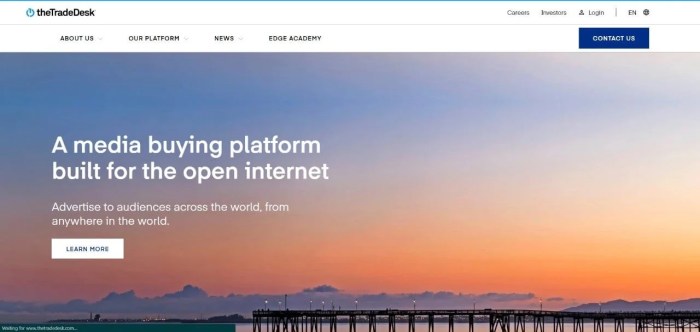
Crafting successful ad campaigns requires the right tools tailored to the specific campaign type. Choosing the correct platform and software ensures your message resonates with the target audience and achieves your objectives. This section delves into advertising tools suitable for diverse campaign types, offering insights into their features and functionalities.
Different advertising campaigns demand different approaches. A campaign focused on social media engagement needs a different set of tools compared to one emphasizing content marketing or influencer outreach. Understanding the nuances of each type and selecting the appropriate tools is crucial for maximizing campaign effectiveness.
Social Media Campaigns
Social media campaigns require tools for scheduling posts, managing multiple accounts, analyzing performance, and running targeted ads. Effective social media management tools empower advertisers to track key metrics, like engagement and reach, to fine-tune their strategies.
Choosing the right tools for ad campaigns is crucial, but sometimes even the best tools can’t save a flagging campaign. If your Facebook ads aren’t performing as expected, check out this helpful guide on how to turn around a failing Facebook ad campaign for actionable strategies. Ultimately, understanding your audience and tailoring your tools to their needs will lead to more successful campaigns.
- Buffer: A widely used platform for scheduling social media posts across multiple platforms. Its scheduling features, analytics dashboards, and collaborative tools streamline the process. Buffer allows for detailed scheduling and analysis, enabling adjustments to maximize impact.
- Hootsuite: Known for its robust features, Hootsuite provides comprehensive social media management, including scheduling, monitoring, and analytics. Its versatility makes it suitable for managing multiple accounts across diverse platforms. Hootsuite provides an integrated dashboard to track and analyze campaign performance, which can be customized based on campaign goals.
- Sprout Social: This tool excels in social listening and engagement. Sprout Social offers advanced analytics, helping advertisers understand what resonates with their audience and identify potential influencers. Sprout Social is particularly effective for brands seeking to understand customer sentiment and proactively address concerns.
Content Marketing Campaigns
Content marketing tools are essential for creating, managing, and promoting content across various platforms. These tools often integrate with social media management for a cohesive strategy.
- WordPress: A widely used content management system (CMS), WordPress facilitates creating and managing blogs, websites, and other content assets. Its versatility allows for customization and adaptation to diverse needs. WordPress’s extensive plugin ecosystem enables integrations with various tools for improved campaign performance.
- SEMrush: This tool offers a comprehensive suite of content marketing tools, including research, content analysis, and competitor analysis. Its research functionality helps advertisers identify relevant topics and phrases to attract targeted traffic. SEMrush’s competitor analysis features help strategize and tailor content to outpace competitors.
- CoSchedule: This tool simplifies content planning, scheduling, and promotion across various channels. Its calendar view enables visual planning and scheduling of content across multiple platforms. CoSchedule provides collaborative tools for teams to work together effectively.
Influencer Marketing Campaigns
Influencer marketing tools help identify, manage, and track influencer collaborations. These tools often provide analytics to measure the effectiveness of campaigns.
- Upfluence: This tool simplifies influencer identification and campaign management. It helps brands find relevant influencers based on specific criteria and budget. Upfluence also facilitates communication and collaboration between brands and influencers.
- Grin: Grin provides a platform for managing influencer relationships and tracking campaign performance. It streamlines communication and collaboration with influencers. Grin’s platform facilitates reporting and tracking campaign results, enabling adjustments to optimize outcomes.
- Traackr: This tool helps identify and track relevant influencers, providing detailed analytics on their performance. Traackr enables data-driven decisions regarding influencer selection and campaign strategy. Traackr allows for precise tracking of campaign performance and identification of high-impact influencers.
Comparison Table, Tools for ad campaigns
| Tool | Social Media | Content Marketing | Influencer Marketing |
|---|---|---|---|
| Buffer | Scheduling, analytics, collaboration | Basic content management, limited analytics | Limited influencer management |
| Hootsuite | Comprehensive management, analytics, scheduling | Content management, analytics, research | Basic influencer management |
| Sprout Social | Social listening, engagement, analytics | Content management, analytics, competitive analysis | Influencer identification, tracking |
| WordPress | Content creation | Content creation, management | Content creation (for influencers) |
| SEMrush | Limited research | research, content analysis | Limited influencer identification |
| CoSchedule | Scheduling, content planning | Content planning, scheduling | Scheduling collaborations |
| Upfluence | Limited | Limited | Influencer identification, management, campaign tracking |
| Grin | Limited | Limited | Influencer management, campaign tracking, communication |
| Traackr | Limited | Limited | Influencer identification, tracking, analytics |
Emerging Trends and Innovative Tools
AI-powered tools are becoming increasingly prevalent in all campaign types, automating tasks and providing more accurate insights. Personalized content delivery and micro-influencer marketing are also emerging trends, tailoring messaging to smaller, more targeted audiences.
Tools for Measuring Campaign Effectiveness
Knowing whether your ad campaigns are working is crucial for optimizing future efforts and maximizing return on investment. This involves more than just feeling that something is “working”. Accurate measurement provides the data-driven insights needed to refine strategies and achieve greater success.
Understanding the effectiveness of advertising campaigns requires a comprehensive approach to evaluating various metrics. This goes beyond simply counting impressions or clicks. It involves digging deeper into user behavior and campaign performance to uncover actionable insights.
Choosing the right tools for ad campaigns is crucial, but a poorly designed website can quickly negate all your efforts. For example, understanding 6 dreadful design mistakes that’ll ruin your SEO, like slow loading times or confusing navigation, is vital for a successful campaign. 6 dreadful design mistakes thatll ruin your seo will give you actionable insights to avoid these pitfalls.
Ultimately, the best ad campaign tools are only as effective as the platform they’re used on.
Key Performance Indicators (KPIs) for Campaign Evaluation
Understanding campaign performance hinges on tracking key metrics. These KPIs provide a comprehensive view of the effectiveness of your advertising efforts. Different campaigns will prioritize different KPIs depending on their specific goals.
- Click-Through Rate (CTR): This measures the percentage of people who saw your ad and clicked on it. A higher CTR indicates a more engaging ad that resonates with the target audience. For example, a CTR of 5% suggests that 5 out of every 100 people who saw the ad clicked on it.
- Conversion Rate: This measures the percentage of visitors who take a desired action, such as making a purchase or signing up for a newsletter, after clicking on your ad. A high conversion rate demonstrates that your ad effectively guides users toward the desired outcome. For example, a conversion rate of 10% means that 10 out of every 100 visitors who clicked on the ad completed the desired action.
- Return on Ad Spend (ROAS): This crucial metric calculates the profit generated for every dollar spent on advertising. A high ROAS signifies that your ad campaign is profitable and efficient. For example, an ROAS of 5x means that for every dollar spent on ads, you generated $5 in profit.
- Cost Per Acquisition (CPA): This measures the cost of acquiring a customer or lead through your ad campaign. A low CPA suggests that your ad campaign is effective in generating valuable leads at a reasonable cost. For instance, a CPA of $20 indicates that you spend $20 to acquire each new customer through the campaign.
- Engagement Metrics: Beyond clicks and conversions, consider metrics like time spent on page, bounce rate, and social media interactions. These provide insights into how users interact with your content and whether your ad is creating meaningful engagement. For instance, if users spend an average of 2 minutes on your landing page after clicking an ad, that suggests high engagement.
A low bounce rate (percentage of users leaving immediately after landing on the page) also indicates user interest.
Analyzing Campaign Data for Optimization
Regularly monitoring and analyzing campaign data is paramount to making informed decisions and optimizing future efforts. The insights derived from this analysis provide a clear roadmap for improvement.
- Identify Trends: Tracking KPIs over time helps identify patterns and trends in user behavior. This allows you to understand what’s working and what’s not. For example, a consistent increase in conversion rate over several weeks indicates a successful campaign, while a sudden drop may signal a problem that needs investigation.
- Segment Data: Divide your data into segments based on demographics, location, or other relevant factors to pinpoint specific audience preferences. This allows you to tailor your future campaigns to particular segments. For example, targeting ads at specific age groups or geographic locations might yield different results, enabling more effective campaign strategies.
- A/B Testing: Experiment with different ad variations to determine which performs best. This allows you to optimize future campaigns based on what resonates most with your target audience. For example, testing different ad creatives, headlines, or calls to action can significantly impact campaign effectiveness.
- Iterative Improvement: Use data insights to refine your campaigns. Continuously adjust your strategy based on performance data to maximize your return on investment. This is an ongoing process, not a one-time event.
Visual Representation of Campaign Performance Impact
A graph illustrating the impact of different tools on campaign performance would visually represent the correlation between specific tools, like targeting options, ad creatives, and campaign metrics (CTR, conversion rate, ROAS). A line graph could demonstrate the increase or decrease in these metrics over time, highlighting the positive or negative effects of various implemented tools.
Tools for Managing and Automating Campaigns
Taking control of your advertising campaigns is crucial for maximizing ROI. Automation tools streamline various tasks, from scheduling ads to generating reports, freeing up valuable time and resources for strategic decision-making. This allows marketers to focus on optimizing campaigns and identifying areas for improvement, ultimately driving better results.Effective campaign management relies on a combination of strategic planning and tactical execution.
Automation tools bridge this gap, allowing marketers to manage multiple campaigns simultaneously while maintaining consistent performance and accuracy.
Examples of Automation Tools
Various tools cater to different aspects of campaign management. Scheduling tools automate the publishing and pausing of ads at specific times, ensuring optimal visibility and engagement with your target audience. Budgeting tools automatically track spending and adjust budgets based on predefined rules, preventing overspending and ensuring that funds are allocated effectively. Reporting tools automate the collection and analysis of data, providing insights into campaign performance and identifying areas for improvement.
Benefits of Automation Tools
Automation tools offer several advantages, including improved efficiency and reduced manual effort. They allow marketers to manage multiple campaigns simultaneously without compromising quality. Automation minimizes human error, ensuring consistency and accuracy in reporting and execution. Real-time tracking and analysis empower marketers to make informed decisions based on the data, ultimately leading to better results.
Drawbacks of Automation Tools
While automation tools provide significant advantages, they also have drawbacks. A lack of customization options can limit the flexibility of some tools. The complexity of setting up automation rules can pose a challenge for less technically savvy users. Over-reliance on automation can lead to a lack of human touch, potentially hindering the ability to adapt to unexpected changes in the market or audience.
Finally, the dependence on the platform can lead to a lack of control if the platform experiences technical issues.
Comparison of Automation Tools
Different automation tools cater to specific needs. Tools like Google Ads offer extensive automation features directly integrated into the platform, providing comprehensive management of campaigns. Other specialized tools, such as Hootsuite, excel at social media advertising automation, offering comprehensive scheduling and reporting capabilities for various social platforms. The choice of tool depends on the specific needs and scope of the campaign.
Importance of User-Friendly Interfaces
User-friendly interfaces are crucial for effective campaign management. A clear and intuitive interface allows marketers to easily navigate the platform, set up campaigns, and track performance. Complex interfaces can be time-consuming and frustrating to use, potentially leading to errors and decreased productivity.
Step-by-Step Guide for Using an Automation Tool
This guide Artikels a basic approach for using an automation tool to streamline campaign processes:
- Define campaign objectives: Clearly define what you want to achieve with your campaign. This will help you select the appropriate tools and features.
- Choose the right automation tool: Evaluate various tools based on your specific needs and budget. Consider factors like features, user-friendliness, and integration capabilities.
- Set up campaign parameters: Configure the tool to reflect your campaign goals. This may involve setting budgets, scheduling ads, and defining target audiences.
- Monitor campaign performance: Regularly track key metrics to identify areas for improvement. Use the reporting features of the tool to understand the effectiveness of your strategies.
- Adjust campaign settings: Based on the data collected, make necessary adjustments to optimize campaign performance. This could involve modifying budgets, targeting, or ad creatives.
Final Wrap-Up
In conclusion, mastering tools for ad campaigns is crucial for any marketer. This guide has provided a comprehensive overview of various tools, helping you navigate the complexities of advertising technology. By understanding the different types of tools, choosing the right ones for your needs, and integrating them effectively, you can significantly enhance your campaign performance and achieve your marketing objectives.
Remember to regularly monitor and analyze your data, and use insights to optimize future campaigns.

